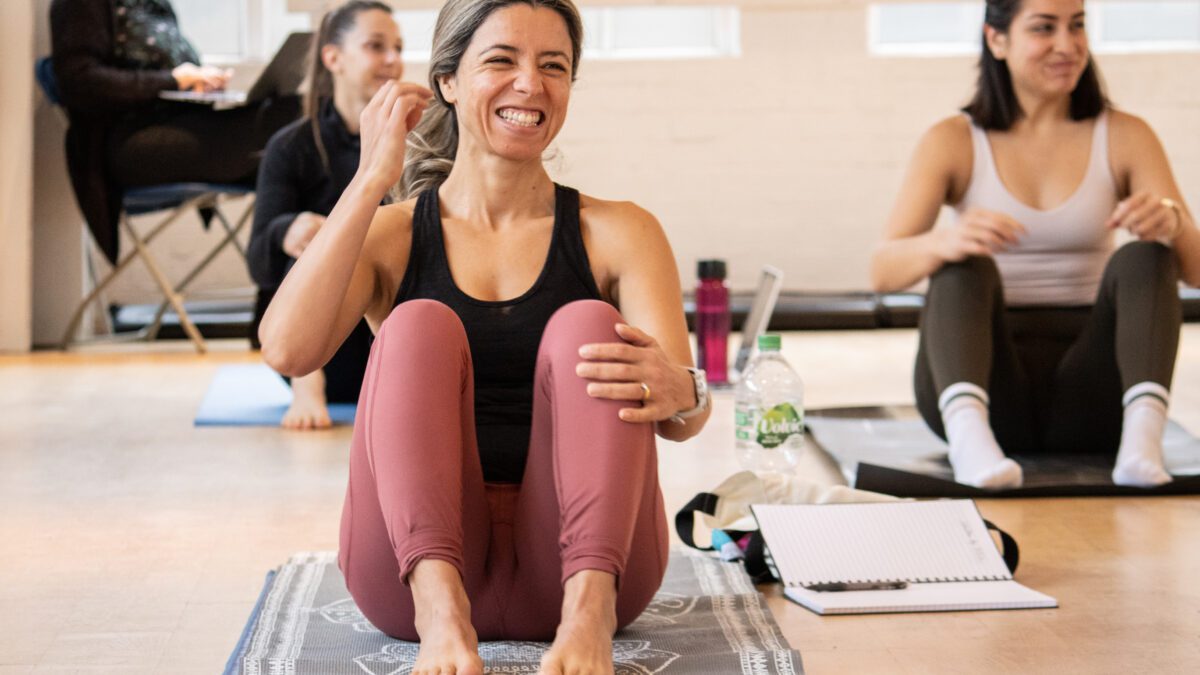



Simply put, your kidneys produce urine, which is constantly trickling into your bladder. When your bladder is full, and you go to the toilet, it contracts, and your pelvic floor relaxes, allowing urine to pass through your urethra. Stress incontinence is unwanted leaks in between toilet visits when the pressure on the bladder has increased (perhaps due to a jumping movement or a sneeze), and the pelvic floor muscles are not strong enough to keep the urethra closed. This can be particularly embarrassing for people, limiting what activities they can do or what clothing they feel at ease wearing.
In extreme cases, surgery may be necessary, but most of the time, pelvic floor strengthening exercises will do a marvellous job of reducing episodes, re-educating the mind-body connection and improving body awareness.
Most commonly, stress incontinence occurs after childbirth, during menopause, as we age, through obesity or after prolonged high-impact exercise. Re-read those. That’s a huge portion of society who are affected. This is so unbelievably common, yet people don’t want to seek help because they are too embarrassed.
Pelvic floor exercises are a great way to limit or prevent stress incontinence. When teaching specific pelvic floor exercises, I try to pick a point in the class where no one can see anyone else (ie lying supine). Pelvic floor muscles can be squeezed in any position, but if you have a bubbly group who might giggle, I try to maintain concentration and control by removing the temptation. Pelvic floor muscles can be held at a constant rate (we usually say 30% in Pilates). This strengthens their endurance fibres (white) and allows the muscles to work harder throughout each day for you. They can also be squeezed maximally quickly. This strengthens their strength fibres (red) and encourages them to react to increases in abdominal pressure. The combination of these, along with some homework (10 fast squeezes each time you drink a cup of tea) should see an improvement in your clients’ pelvic floor function.
Explaining the pelvic floor and contracting it can be challenging for some people. The absolute best way to describe the feeling is to say, ‘squeeze as if you need to go to the toilet, but you’re not quite in the bathroom yet’. Everyone can relate to this, and it works for both sexes. I’ve heard many Pilates instructors giving far too graphic descriptions, leaving their clients confused and embarrassed. Once your clients understand how to squeeze it, they just need to remember to do it. When they see you in class or for 1:1, you are on hand to remind them, but after that, they are trusted to try and make it part of their day. Clients can get apps now to remind them to activate their pelvic floor at various intervals throughout the day. Their phone will beep, and they can tick off that they have done it.
If you have a client discussing their stress incontinence with you, the chances are they are worried and embarrassed but feel comfortable with you as you have gained their trust over a period of time. When they ask about it, their symptoms may be quite severe and may need medical intervention. If you are in any doubt, refer them to a medical practitioner. They may need a scan to assess their situation accurately.
The people asking me in classes are getting younger and younger. This highlights to us as Pilates teachers how much we really need to include the pelvic floor in the set-up of every exercise we do. It is fundamental. It can be the difference between someone leaving the house with confidence or only leaving it if they have to. As Pilates instructors, we CAN make a difference.
Start your journey as a Pilates teacher today with our industry recognised Pilates quallifications